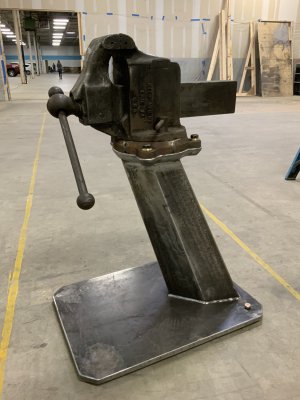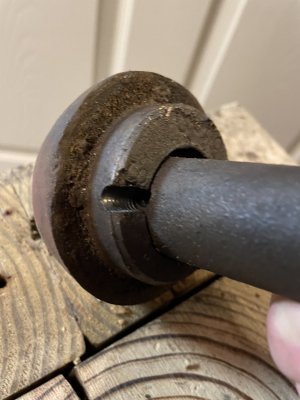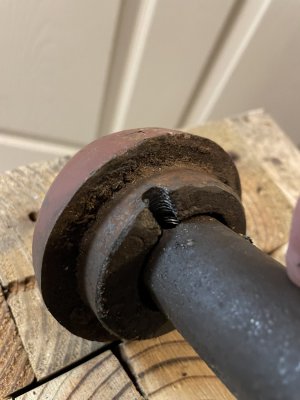I've had a pile of bigger vises up to 8" jaws and 250lbs...sold all but the C3 as they were simply impractical, even when I owned a bull dozer, backhoe, dump truck, etc. The big problem is that the 6" and bigger vises are too tall to use on a normal workbench unless you're a really tall person. They put the work around my armpits, so they really have to be mounted on a stand at the right height to be useful. I have the material to make a stand for the C3, I just haven't needed it for anything and it's been on the dolly for years now. The only reason I have a vise this big is to work on other vises. I actually have a picture of the C0 from above in the C3 above doing a repair to the dust cap assembly (pins were loose)...this is about the only time I use the C3. I forgot, but this shows the factory grease Wilton uses...it's thick like cosmoline.
View attachment 454572
To put it in perspective, the Army uses Wilton C2s (5" jaw, 100lbs) on the trailers they use to repair M1 tanks. If you're working on stuff bigger than an M1 tank, maybe a C3 is helpful...lol. The folks on Garage Journal would have you believe you can't do anything with a vise smaller than 6" and 150lbs or so. In reality, the most common vise size in welding and fabrication shops is 4.5" and 75lbs give or take.
I think the OP's C0 is a great size for hobby shop use....doesn't take up a bunch of space on the bench, will hold most anything needed, and doesn't cost $1,500. One of my most uses Wiltons is a little 300 with 3" jaws...use it a hundred times more than the big vises.
Starrett 925 , Wilton 6" with the copper soft jaws , Wilton 4500 , Unknown USA vise and my Dads little Littlestown vise . I've sold so many vises out on the road at yard sales I couldn't count them .




